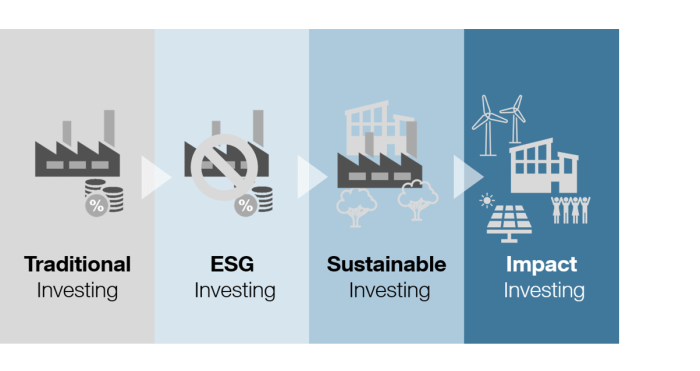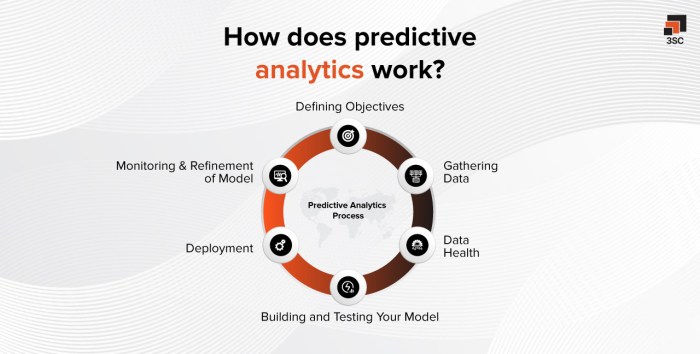How to Prepare for Tax Season with Efficient Accounting Practices: Navigating tax season can feel overwhelming, but with proactive accounting, it doesn’t have to be. This guide provides a structured approach to organizing your finances, gathering essential documents, and utilizing effective accounting methods to ensure a smooth and stress-free tax filing experience. We’ll explore various strategies, from choosing the right accounting software to understanding and claiming available deductions, ultimately empowering you to take control of your financial records and confidently prepare for tax season.
From meticulous record-keeping to leveraging accounting software, we’ll cover every step of the process. Learn how to categorize income and expenses, gather necessary tax documents, and choose the accounting method that best suits your needs. We’ll also delve into claiming deductions and credits, preparing your tax return, and understanding potential penalties to avoid. By the end, you’ll have a clear understanding of how to streamline your accounting practices for a more efficient and less stressful tax season.
Understanding Your Financial Records
Meticulous record-keeping is the cornerstone of efficient tax preparation. Maintaining accurate and organized financial records throughout the year significantly simplifies the tax filing process, reduces stress, and minimizes the risk of errors or omissions. A well-organized system allows for quick access to necessary documents, enabling a smoother and more efficient tax preparation experience.
Effective record-keeping not only streamlines tax preparation but also provides valuable insights into your financial health. By tracking income and expenses, you can identify areas where you might be overspending, uncover potential tax deductions, and make informed financial decisions. This proactive approach empowers you to manage your finances more effectively and achieve your financial goals.
Methods for Organizing Financial Documents
Choosing the right method for organizing your financial documents depends on your personal preferences and technological comfort level. Both digital and physical methods offer advantages and disadvantages. A hybrid approach, combining both digital and physical storage, might be the most effective solution for many individuals.
Digital methods offer convenience and ease of access. Software like accounting programs or cloud-based storage services provide centralized storage and efficient searching capabilities. However, reliance on technology introduces risks such as data loss due to technical failures or cybersecurity breaches. Regular backups are essential to mitigate these risks.
Physical methods, such as filing cabinets or organized folders, provide a tangible record of your finances. This approach offers a degree of security against technological failures, but it can be less efficient for searching and retrieving specific documents. Physical storage also requires dedicated space and careful organization to prevent clutter and ensure easy retrieval.
Categorizing Income and Expenses
Categorizing income and expenses is crucial for accurate tax preparation and financial analysis. A consistent and detailed categorization system helps to track income sources and identify deductible expenses. This structured approach simplifies the process of compiling necessary information for tax returns and provides valuable insights into spending habits.
A step-by-step guide to categorizing income and expenses involves:
1. Identify all income sources: This includes wages, salaries, self-employment income, investment income, and any other sources of revenue. Record each source separately.
2. Categorize expenses: Group expenses into relevant categories, such as rent/mortgage, utilities, transportation, food, medical expenses, business expenses, and charitable contributions. Use a consistent categorization system throughout the year.
3. Document each transaction: For each transaction, record the date, description, category, and amount. This detailed information ensures accuracy and facilitates efficient tax preparation.
4. Regularly review and update: Periodically review your records to ensure accuracy and make necessary corrections. This proactive approach prevents errors and maintains the integrity of your financial data.
Sample Spreadsheet Layout for Tracking Income and Expenses
A simple spreadsheet can be a highly effective tool for tracking income and expenses. The following table provides a sample layout for a four-column spreadsheet:
| Date | Description | Category | Amount |
|---|---|---|---|
| 2024-03-01 | Salary | Income | 2500 |
| 2024-03-05 | Groceries | Food | 150 |
| 2024-03-10 | Rent | Housing | 1200 |
| 2024-03-15 | Utilities | Utilities | 200 |
This simple structure allows for easy data entry and analysis. More complex spreadsheets can include additional columns for notes, tax implications, or other relevant information. Remember to regularly back up your spreadsheet data.
Gathering Necessary Tax Documents
Efficient tax preparation hinges on the meticulous collection and organization of all relevant financial documents. Failing to gather necessary documents can lead to delays, inaccuracies, and potentially even penalties. A well-structured approach to document gathering simplifies the entire tax preparation process and minimizes stress.
Gathering the correct tax documents is crucial for accurate tax filing. Missing documents can result in delays and potential errors, impacting your tax refund or liability. Furthermore, maintaining organized records simplifies audits and provides a clear financial picture for future planning.
Essential Tax Document Checklist
A comprehensive checklist ensures you don’t overlook critical documents. This list covers common documents, but individual circumstances may require additional forms.
- W-2 Forms (Wage and Tax Statement): Received from employers, detailing wages earned and taxes withheld.
- 1099 Forms (Miscellaneous Income): Received for various income sources like freelance work, interest, dividends, or royalties. Different 1099 forms exist (e.g., 1099-NEC, 1099-INT, 1099-DIV) depending on the income type.
- Receipts for Deductible Expenses: These are crucial for substantiating deductions claimed. Examples include charitable donations, medical expenses, business expenses (if self-employed), and home office expenses.
- Tax Returns from Previous Years: Useful for comparing income and deductions, identifying potential changes, and ensuring consistency.
- Mortgage Interest Statements (Form 1098): Shows the amount of mortgage interest paid during the year, a deductible expense for homeowners.
- Tuition Statements (Form 1098-T): Details payments made for higher education expenses, potentially eligible for education credits or deductions.
- Investment Records: Statements from brokerage accounts, showing capital gains, losses, and dividends received.
Importance of Retaining Supporting Documentation for Deductions
The IRS requires taxpayers to maintain adequate records to support any deductions claimed on their tax return. Simply stating a deduction without supporting documentation can lead to the deduction being disallowed, resulting in a higher tax liability. Keeping organized records also simplifies audits and provides a clear financial history.
For example, claiming a charitable donation deduction requires proof of the donation, such as a bank statement showing the transaction or a written acknowledgement from the charity. Similarly, business expenses require detailed receipts and records to show a direct connection to the business activity. The level of detail required depends on the amount of the deduction and the complexity of the expense.
Sample Workflow for Collecting and Organizing Tax Documents
A systematic approach to collecting and organizing tax documents minimizes the risk of losing important information and simplifies the tax preparation process. This workflow suggests a practical method, but it can be adapted to suit individual needs and preferences.
When investigating detailed guidance, check out Cost Control Strategies Using Accounting Data now.
- Designated Storage Area: Create a dedicated folder or file system (physical or digital) for all tax-related documents.
- Regular Gathering: Throughout the year, collect all relevant tax documents as they arrive. This prevents last-minute scrambling.
- Categorization: Organize documents into categories (W-2s, 1099s, receipts, etc.) for easy retrieval.
- Digital Scanning: Scan all important documents to create digital backups. This provides redundancy and protection against loss or damage.
- Data Entry: Consider using tax software or spreadsheet to record key information from your documents. This facilitates efficient data entry into your tax return.
- Review and Verification: Before filing, review all documents to ensure accuracy and completeness.
Document Gathering Process Flowchart
A visual representation of the document gathering process can be helpful. The following flowchart uses bullet points to illustrate the steps.
- • Start: Begin the tax document gathering process.
- • Identify Document Types: Determine which documents are needed based on income sources and deductions.
- • Gather Documents: Collect all relevant documents (W-2s, 1099s, receipts, etc.).
- • Organize Documents: Sort documents into categories for easy access.
- • Create Digital Copies: Scan or photograph documents to create digital backups.
- • Verify Accuracy: Review all documents for completeness and accuracy.
- • Store Documents: Securely store both physical and digital copies of documents.
- • End: The document gathering process is complete.
Choosing the Right Accounting Method: How To Prepare For Tax Season With Efficient Accounting Practices
Selecting the appropriate accounting method is crucial for small businesses, impacting tax liability, financial reporting, and overall business management. The choice primarily lies between the cash basis and the accrual basis. Understanding their differences is vital for making an informed decision.
Cash Basis Accounting
Cash basis accounting recognizes revenue when cash is received and expenses when cash is paid. This method is simpler to implement and maintain, especially for small businesses with limited transactions. It provides a clear and straightforward picture of current cash flow.
Accrual Basis Accounting
Accrual basis accounting recognizes revenue when it is earned, regardless of when cash is received, and expenses when they are incurred, regardless of when cash is paid. This method offers a more accurate reflection of a business’s financial performance over time, as it matches revenues and expenses to the periods they relate to. However, it requires more complex record-keeping and can be more challenging for small businesses to manage.
Comparison of Cash and Accrual Basis Accounting Methods for Small Businesses
The following table summarizes the key advantages and disadvantages of each method for small businesses:
| Feature | Cash Basis | Accrual Basis |
|---|---|---|
| Simplicity | High | Low |
| Record-keeping | Simple | Complex |
| Accuracy of Financial Picture | Lower | Higher |
| Tax Implications | Can defer tax payments if revenue is received later | Requires more precise tracking for tax purposes |
| Suitability for Small Businesses | Ideal for businesses with low volume of transactions | More suitable for businesses with high volume of transactions or complex financial arrangements |
Situations Favoring Cash or Accrual Basis Accounting
Cash basis accounting is generally preferred by small businesses with a low volume of transactions and straightforward financial activities. For instance, a sole proprietor offering freelance services might find cash basis simpler to manage. Conversely, accrual accounting is more suitable for businesses with significant inventory, extended credit terms with customers or suppliers, or complex financial arrangements. A retail store offering credit to customers would benefit from using the accrual method for a more accurate representation of its financial performance.
Examples of Income and Expense Recognition
Let’s consider a small bakery. Under the cash basis, revenue is recognized only when a customer pays for their goods, whether by cash or card. If a customer orders a cake for a future date and pays in advance, the revenue is recognized upon receiving the payment, not on the delivery date. Expenses, such as ingredient purchases, are recognized when the bakery pays its suppliers.
Under the accrual basis, the bakery would recognize revenue when the cake is delivered, even if payment was received earlier. The expense for ingredients would be recognized when they are used in baking, regardless of when they were purchased. This aligns revenue and expenses with the relevant period, providing a more accurate picture of profitability for that period.
Utilizing Accounting Software
Streamlining your tax preparation process significantly benefits from employing accounting software. These applications automate many tedious tasks, reducing errors and freeing up your time to focus on other aspects of your business or personal finances. From tracking income and expenses to generating reports for tax professionals, the right software can be invaluable.
Accounting software offers several key advantages for tax preparation. Accurate record-keeping is paramount, and software automates this process, minimizing the risk of human error. This accuracy translates directly into a smoother, more efficient tax filing experience, potentially reducing the likelihood of audits and penalties. Furthermore, many programs generate reports directly compatible with tax software, saving you time and effort during the filing process. Finally, the organized data provided by accounting software facilitates better financial planning and decision-making, extending its benefits beyond tax season.
Popular Accounting Software Options, How to Prepare for Tax Season with Efficient Accounting Practices
Several popular accounting software options cater to diverse needs and budgets. Each program offers a unique set of features, and the best choice depends on your specific requirements, such as business size, complexity of finances, and technical expertise. Consider factors like ease of use, reporting capabilities, integration with other financial tools, and customer support when making your selection.
Inputting Financial Data into Accounting Software
The process of inputting financial data typically involves creating accounts (e.g., income categories, expense categories, asset accounts, liability accounts) that mirror your financial structure. Then, you systematically enter your transactions, specifying the date, description, amount, and the relevant accounts involved. Most software programs provide intuitive interfaces with guided input fields to simplify this process. Regular data entry, ideally after each transaction, is crucial for maintaining accurate and up-to-date records. Reconciling your bank statements with your software’s records is a critical step to ensure accuracy and catch any discrepancies.
Comparison of Accounting Software Packages
| Feature | QuickBooks Self-Employed | Xero | FreshBooks |
|---|---|---|---|
| Pricing | Starting at $10/month | Starting at $12/month | Starting at $15/month |
| User-Friendliness | Very user-friendly, intuitive interface | User-friendly, slightly steeper learning curve than QuickBooks | User-friendly, good for small businesses |
| Invoicing | Yes, customizable invoices | Yes, professional-looking invoices | Yes, streamlined invoicing process |
| Expense Tracking | Automated expense tracking with mobile app | Automated expense tracking, bank feeds | Automated expense tracking, receipt capture |
| Reporting | Comprehensive reports for tax preparation | Robust reporting capabilities, customizable reports | Good reporting features, suitable for tax purposes |
| Customer Support | Phone, email, and online help | Phone, email, and online help | Email and online help |
Claiming Tax Deductions and Credits
Effectively utilizing tax deductions and credits is crucial for minimizing your tax liability. Understanding which deductions and credits you qualify for and accurately documenting them can significantly impact your refund or tax owed. This section will Artikel common deductions and credits available to individuals and small businesses, detailing the requirements and providing examples for calculation and documentation.
Common Tax Deductions for Individuals
Several deductions can reduce your taxable income. These deductions are often based on specific expenses or contributions. Accurate record-keeping is paramount for claiming these deductions.
- Charitable Contributions: You can deduct cash contributions up to 60% of your adjusted gross income (AGI) and non-cash contributions (like clothing or household goods) up to 50% of your AGI. Keep detailed records of donations, including receipts or bank statements showing the date and amount of the contribution. For example, if you donated $5,000 in cash to a qualified charity and your AGI is $10,000, you can deduct the full $5,000. However, if your AGI was $50,000, you could only deduct $3,000 (50% of $6,000, the maximum non-cash contribution limit).
- Home Mortgage Interest: You can deduct the interest paid on a mortgage for a primary or secondary home, up to a certain loan amount. Maintain records of your mortgage interest statements from your lender. For instance, if you paid $10,000 in mortgage interest during the year, you can deduct this amount (provided you meet other requirements like the loan amount limit).
- State and Local Taxes (SALT): The deduction for state and local taxes is capped at $10,000 per household. Gather your tax returns from state and local governments to determine the amount you can deduct. For example, if you paid $12,000 in state and local taxes, you can only deduct $10,000.
Common Tax Credits for Individuals
Tax credits directly reduce the amount of tax you owe, offering a more significant benefit than deductions. Several credits are available, depending on your circumstances.
- Earned Income Tax Credit (EITC): This credit is for low-to-moderate-income working individuals and families. Eligibility is based on income, family size, and filing status. Accurate calculation requires using the IRS’s EITC Assistant tool or consulting a tax professional. For example, a single filer with one qualifying child might be eligible for a credit of several thousand dollars, depending on their income.
- Child Tax Credit (CTC): This credit is for taxpayers with qualifying children. The amount of the credit depends on the number of qualifying children and the taxpayer’s income. You’ll need documentation like your children’s Social Security numbers and birth certificates. For example, the credit amount per child can vary significantly based on income levels and may be partially refundable.
- Child and Dependent Care Credit: This credit helps offset the cost of childcare for qualifying children under age 13 so that you can work or look for work. Keep records of childcare expenses, such as receipts and payment records. The credit is calculated based on your expenses and income.
Common Tax Deductions and Credits for Small Businesses
Small business owners have access to several deductions and credits to reduce their tax burden. Careful record-keeping is essential for claiming these benefits.
- Home Office Deduction: If you use part of your home exclusively and regularly for business, you can deduct a portion of your home-related expenses, such as mortgage interest, rent, utilities, and depreciation. You need to accurately determine the percentage of your home used for business. For example, if 25% of your home is used for business, you can deduct 25% of your eligible home expenses.
- Qualified Business Income (QBI) Deduction: This deduction allows eligible self-employed individuals and small business owners to deduct up to 20% of their qualified business income. Detailed records of business income and expenses are necessary to calculate this deduction. For example, if your QBI is $50,000, you could deduct $10,000 (20% of $50,000).
Preparing and Filing Your Tax Return
Preparing and filing your tax return is the culmination of your year-round accounting efforts. This crucial step determines your tax liability and ensures compliance with tax laws. Accuracy and timeliness are paramount to avoid penalties and ensure a smooth process.
Preparing your tax return involves carefully transferring the information you’ve diligently gathered throughout the year into the appropriate sections of your chosen tax form. This process can be streamlined through the use of tax preparation software or with the assistance of a tax professional. Understanding the various filing methods available and common pitfalls to avoid is also critical for a successful tax filing experience.
Tax Return Preparation Using Software or Professional Assistance
Tax preparation software guides users through the process, automatically calculating taxes owed or refunds due. Popular software options offer varying levels of complexity and features, catering to individuals with simple or complex tax situations. These programs often include built-in help features and error checking capabilities. Professional tax assistance, provided by accountants or enrolled agents, offers personalized guidance and expertise, particularly beneficial for individuals with intricate financial situations, significant deductions, or self-employment income. Professionals can help navigate complex tax laws and optimize tax strategies.
Reviewing the Completed Tax Return
Before submitting your tax return, a thorough review is essential. Carefully check all entered data for accuracy, ensuring consistency between different sections of the form. Verify that all relevant deductions and credits have been claimed correctly and that the calculated tax liability or refund aligns with your expectations. Any discrepancies should be investigated and corrected before filing. This review helps prevent errors that could lead to delays, penalties, or audits. For example, double-check the social security number and other identifying information to ensure accuracy.
Tax Return Filing Methods
E-filing offers a convenient and efficient method for submitting tax returns. It’s generally faster than mailing a paper return and reduces the risk of errors associated with manual data entry. Many tax software programs offer direct e-filing capabilities, while others may require integration with third-party e-filing services. The IRS provides resources to confirm successful e-filing. Mailing a paper return is an alternative method, but it’s significantly slower and carries a higher risk of processing delays and errors. The IRS provides specific instructions and mailing addresses for paper returns. For example, if using mail, you should use certified mail with return receipt requested for proof of delivery.
Avoiding Common Tax Filing Errors
Several common errors can lead to delays or penalties. These include mathematical errors in calculations, incorrect reporting of income or deductions, and failure to sign and date the return. Using tax preparation software with built-in error checks can minimize these risks. Maintaining organized financial records throughout the year facilitates accurate data entry and reduces the likelihood of errors. For example, a common mistake is forgetting to include all W-2 forms or 1099 forms. Another is miscalculating self-employment tax. Double-checking all entries and seeking professional assistance when needed are crucial steps in preventing these errors.
Understanding Tax Penalties and Avoiding Them

Navigating the tax system can be complex, and unintentional errors are common. Understanding the potential consequences of mistakes, however, is crucial for responsible tax preparation. Late filing or inaccurate reporting can lead to significant financial penalties, impacting your overall financial well-being. This section will Artikel the potential penalties and provide strategies for accurate and timely tax preparation to avoid them.
Potential Consequences of Late Filing or Inaccurate Reporting
Failure to file your tax return by the deadline or submitting an inaccurate return can result in several penalties. The most common is the late-filing penalty, calculated as a percentage of the unpaid tax. Inaccurate reporting, on the other hand, can lead to penalties for underpayment, as well as interest charges on the unpaid amount. These penalties can accumulate quickly, significantly increasing your tax burden. Furthermore, repeated offenses can lead to more severe consequences, including audits and legal action. Proactive and accurate tax preparation is essential to mitigate these risks.
Common Reasons for Tax Penalties and Their Prevention
Several factors contribute to tax penalties. Common causes include simple mathematical errors, overlooking deductions or credits, misinterpreting tax laws, and poor record-keeping. Prevention strategies involve meticulous record-keeping, using reliable tax software or seeking professional assistance, and carefully reviewing your return before submission. Understanding the tax laws and utilizing available resources are also crucial. Regularly reviewing your financial situation throughout the year and consulting with a tax professional can significantly reduce the risk of errors.
Strategies for Accurate and Timely Tax Preparation
Accurate and timely tax preparation requires a proactive approach. This includes maintaining organized financial records throughout the year, gathering all necessary tax documents well in advance of the filing deadline, and using reliable accounting methods and software. Seeking professional help from a tax advisor can provide valuable guidance and ensure compliance with tax laws. Planning ahead and setting aside sufficient time for tax preparation can significantly reduce stress and the likelihood of errors. Regularly checking for updates to tax laws and regulations can also help avoid costly mistakes.
Examples of Penalties for Common Tax Errors
The following table illustrates examples of penalties for common tax errors. Note that these are examples and the actual penalties may vary depending on the specific circumstances and applicable tax laws.
| Error Type | Penalty | Example |
|---|---|---|
| Late Filing | 0.5% of the unpaid taxes per month or part of a month the return is late, up to a maximum of 25% | A taxpayer owes $10,000 in taxes and files 3 months late. The penalty could be $1,500 (0.5% x $10,000 x 3 months). |
| Underpayment | 0.5% of the unpaid taxes per month or part of a month the tax is unpaid, up to a maximum of 25% | A taxpayer underpaid $5,000 and didn’t pay for 2 months. The penalty could be $500 (0.5% x $5,000 x 2 months). |
| Accuracy-Related Penalty | 20% of the underpayment | A taxpayer underpaid $2,000 due to a significant error. The penalty could be $400 (20% x $2,000). |
Final Summary
Mastering efficient accounting practices is key to a successful tax season. By implementing the strategies Artikeld in this guide – from diligent record-keeping to utilizing appropriate software and understanding tax deductions – you can significantly reduce stress and increase your confidence in navigating the complexities of tax preparation. Remember, proactive planning and organized record-keeping are your best allies in ensuring a smooth and successful tax filing experience. Take control of your finances, and enjoy a more relaxed tax season.
Q&A
What if I lose some of my receipts?
Reconstructing missing receipts can be challenging. Try to use bank and credit card statements to recreate the transaction details as much as possible. Keep detailed records going forward to avoid this issue in future tax seasons.
When should I start preparing for tax season?
Ideally, you should begin organizing your financial records throughout the year, not just in the weeks leading up to the tax deadline. This allows for a more organized and less stressful tax preparation process.
Can I deduct home office expenses?
Yes, if you use a portion of your home exclusively and regularly for business, you may be able to deduct a portion of your home-related expenses. Consult the IRS guidelines for specific requirements and limitations.
What is the difference between a tax deduction and a tax credit?
A tax deduction reduces your taxable income, while a tax credit directly reduces the amount of tax you owe. Tax credits generally provide a greater tax benefit.








